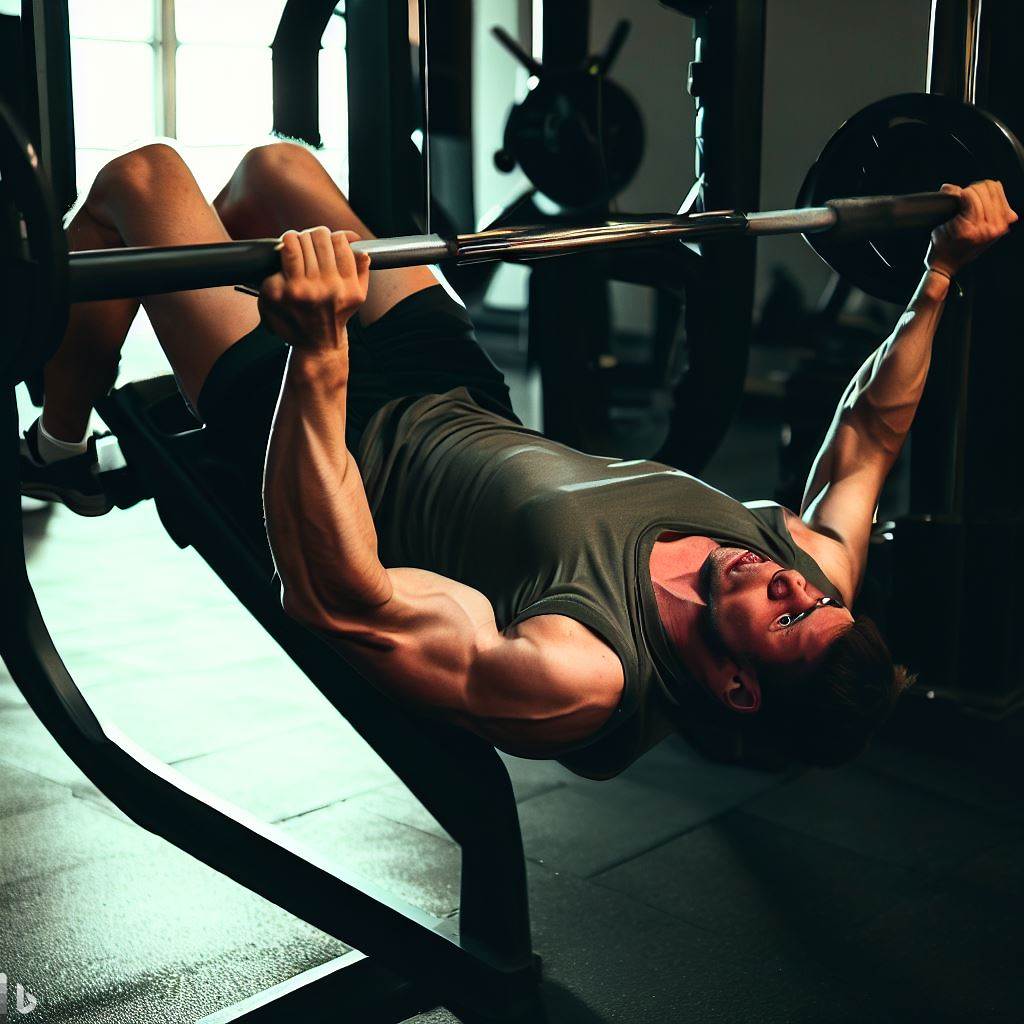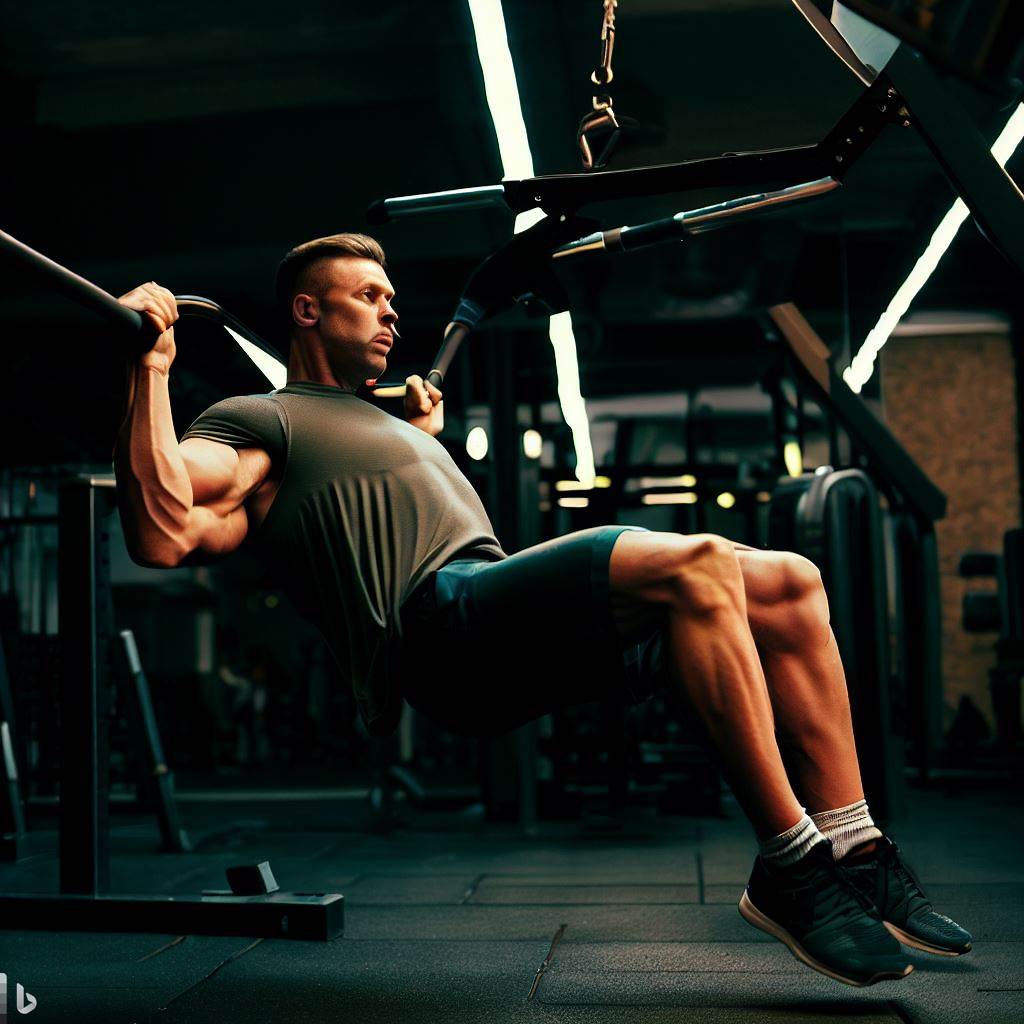Looking to strengthen your back muscles? Discover the benefits and techniques of the inv row exercise. Improve your upper body strength with this effective bodyweight exercise. Find tips and variations to challenge yourself. Get started now!
Introduction
Welcome to our comprehensive guide on the inverted row! In this article, we will cover everything you need to know about this effective exercise that targets your back, arms, and core muscles. This guide will provide you with the information you need, whether you are a fitness enthusiast interested in improving your strength or a beginner interested in learning how to perform inverted rows.
What is an Inverted Row?
Before we dive into the details, let’s understand what an inverted row is. It is a compound exercise that mimics the movement of a horizontal pull-up, also known as a body row or Australian pull-up. This exercise focuses on muscles of the upper back, arms, and core by pulling your body weight towards a bar while keeping your feet on the ground, rather than pulling yourself up to a bar.
Benefits of Inverted Rows
There are numerous benefits to incorporating inverted rows into your workout routine for the purpose of improving your overall fitness and strength. Some of these benefits include:

- Upper Body Strength: Performing inverted rows regularly can result in increased strength and muscle development in your upper back, which includes the rhomboids, trapezius, and latissimus dorsi.
- Core Activation: During the inverted row, your abdominals, obliques, and lower back muscles work together to maintain a stable body position, which promotes core strength and stability.
- Improved Posture: An upright posture is achieved by strengthening the upper back and shoulder muscles. Inverted rows focus on the muscles that are responsible for good posture, which helps alleviate the effects of prolonged sitting and poor posture.
- Versatility and Accessibility: Various types of equipment can be used for inverted rows, including suspension trainers, barbells, or even a sturdy table. This exercise can be adapted to individuals of all fitness levels, so it is suitable for both beginners and advanced exercisers.
How to Perform an Inverted Row?
Inverted rows, also known as body rows or Australian pull-ups, are exercises that primarily target muscles in the upper back, such as the rhomboids, trapezius, and latissimus dorsi, as well as the muscles in the upper back. The movement of this exercise is similar to that of traditional rowing exercises, except that it is performed horizontally rather than vertically.
It is necessary to set a bar or suspension trainer at a height that allows you to hang with your body parallel to the ground in order to perform an inverted row. Here is a step-by-step guide:

- You can adjust the height of the bar or suspension trainer in accordance with your strength and fitness level.
- You should stand facing the bar and grasp it with an overhand grip that is slightly wider than shoulder-width apart.
- Step forward with your feet while keeping your body straight, and lean back until your arms are fully extended.
- Maintain a straight line from your head to your heels by keeping your body rigid, engaging your core, and engaging your core.
- When you begin the movement, pull your chest towards the bar while squeezing your shoulder blades together.
- You should continue pulling until your chest touches the bar or your hands are at your sides.
- Slowly lower your body back to the starting position with control after you have paused for a moment at the top of the movement.
- There is no limit to how many times you can perform this exercise.
The inverted row is an excellent exercise for building upper body strength, improving posture, and targeting the muscles of the back. It can be modified to suit different fitness levels by adjusting the height of the bar or the difficulty of the suspension trainer in order to accommodate different fitness levels. To ensure accurate and safe performance of any exercise, it is important to maintain proper form and begin with weights or difficulties that allow you to perform the movement comfortably and safely.
Variations of Inverted Rows
Several variations of inverted rows can be used to add variety and challenge to your workout. There are several popular variations including the following:
- Feet Elevated Inverted Rows: When you elevate your feet on a bench or step, you increase the difficulty of this exercise by putting more stress on your upper back and arms.
- Single-Arm Inverted Rows: One arm at a time should be used to perform the inverted row, challenging your central stability and unilateral strength.
- Weighted Inverted Rows: The exercise can be made more challenging by holding a dumbbell or by wearing a weighted vest.
- Towel Inverted Rows: You can also use two towels suspended from a bar, grasping each towel with your hands. This variation mobilizes your stabilizing muscles as well as your grip strength.
Common Mistakes to Avoid
The following mistakes should be avoided when performing inverted rows to ensure proper form and to maximize the benefits:

- Hunching the Shoulders: The shoulders should remain down and back throughout the exercise in order to avoid rounding them or allowing them to shrug up towards your ears.
- Lifting the Hips: During the exercise, maintain a straight line from head to heels. Do not lift your hips or allow your body to sag.
- Pulling with the Arms: Use your back muscles to initiate the movement rather than your arms to pull you up. This ensures proper muscle engagement.
- Incomplete Range of Motion: During the exercise, lower yourself until your arms are fully extended and pull until your chest touches the bar. Performing partial reps limits the exercise’s effectiveness.
Equipment for Inverted Rows
Inverted rows can be performed with a variety of equipment options, depending on your preferences and availability:
- Suspension Trainer: Inverted rows can be performed at different angles and intensities using a suspension trainer, such as TRX.
- Smith Machine or Barbell: To perform an inverted row, place the barbell at waist height on a Smith machine or in a squat rack.
- Sturdy Table or Countertop: If you are working out at home, you can use a sturdy table or countertop to perform inverted rows. Make sure that the table or countertop provides a comfortable grip and can support your weight.
- Resistance Bands: Perform inverted rows with resistance bands attached to an anchor point. As you move through the exercises, the bands will provide you with resistance.
Muscles Targeted by Inverted Rows
The following muscle groups are primarily targeted by inverted rows:
- Latissimus Dorsi: “Lats” are the large muscles on either side of your back that are responsible for pulling movements.
- Rhomboids: Rhomboids are located between your shoulder blades and are responsible for retracting and stabilizing the scapulae.
- Trapezius: A trapezius muscle extends from the base of your skull to the middle of your back, and is responsible for pulling the shoulder blades together.
- Biceps: Your biceps are located at the front of your upper arm and are responsible for secondary movements during pulling.
How Often Should You Do Inverted Rows?
You should perform inverted row exercises on a regular basis based on your fitness level and overall workout schedule. Here are some guidelines:

- Beginners: As you progress, increase the intensity of your inverted rows by 2-3 sets per week, focusing on proper form.
- Intermediate: With a day of rest in between sessions, perform 3-4 sets of inverted rows three to four times per week. Increase the difficulty by adding variations or increasing resistance.
- Advanced: The inverted row can be incorporated into your upper-body workout or full-body training regime. Perform four to five sets, three to four times per week, depending on your recovery capacity and other exercises that you perform.
It is imperative that you listen to your body and allow it to rest and recover properly between workouts.
Precautions and Safety Tips
To perform inverted rows safely and effectively, keep the following precautions and tips in mind:
- Warm-Up: Prioritize a proper warm-up that includes dynamic stretches and movements to prepare your muscles and joints for the exercise.
- Proper Form: Maintain a neutral spine, engage your core, and avoid excessive swinging or momentum during inverted rows.
- Gradual Progression: Progress in intensity, difficulty, or resistance gradually to allow your body to adapt and minimize the risk of injury.
- Be aware of any pain or discomfort you may be experiencing in your body and pay attention to it. If something feels off, adjust your form or seek guidance from a qualified professional.
- Individual Differences: Everyone’s fitness level and capabilities are unique. Adjust the exercise to your needs and abilities, focusing on proper technique and range of motion.
Remember, safety should always be your top priority during any exercise routine.
Conclusion
The inverted row is a versatile and effective exercise that targets your back muscles and promotes upper body strength. By incorporating this bodyweight exercise into your workout routine, you can improve your posture, increase pulling strength, and enhance overall upper body stability. Whether you’re a beginner or an advanced fitness enthusiast, the inverted row offers various variations to suit your fitness level and goals. Start incorporating this exercise into your routine and reap the benefits for a stronger, healthier back.

